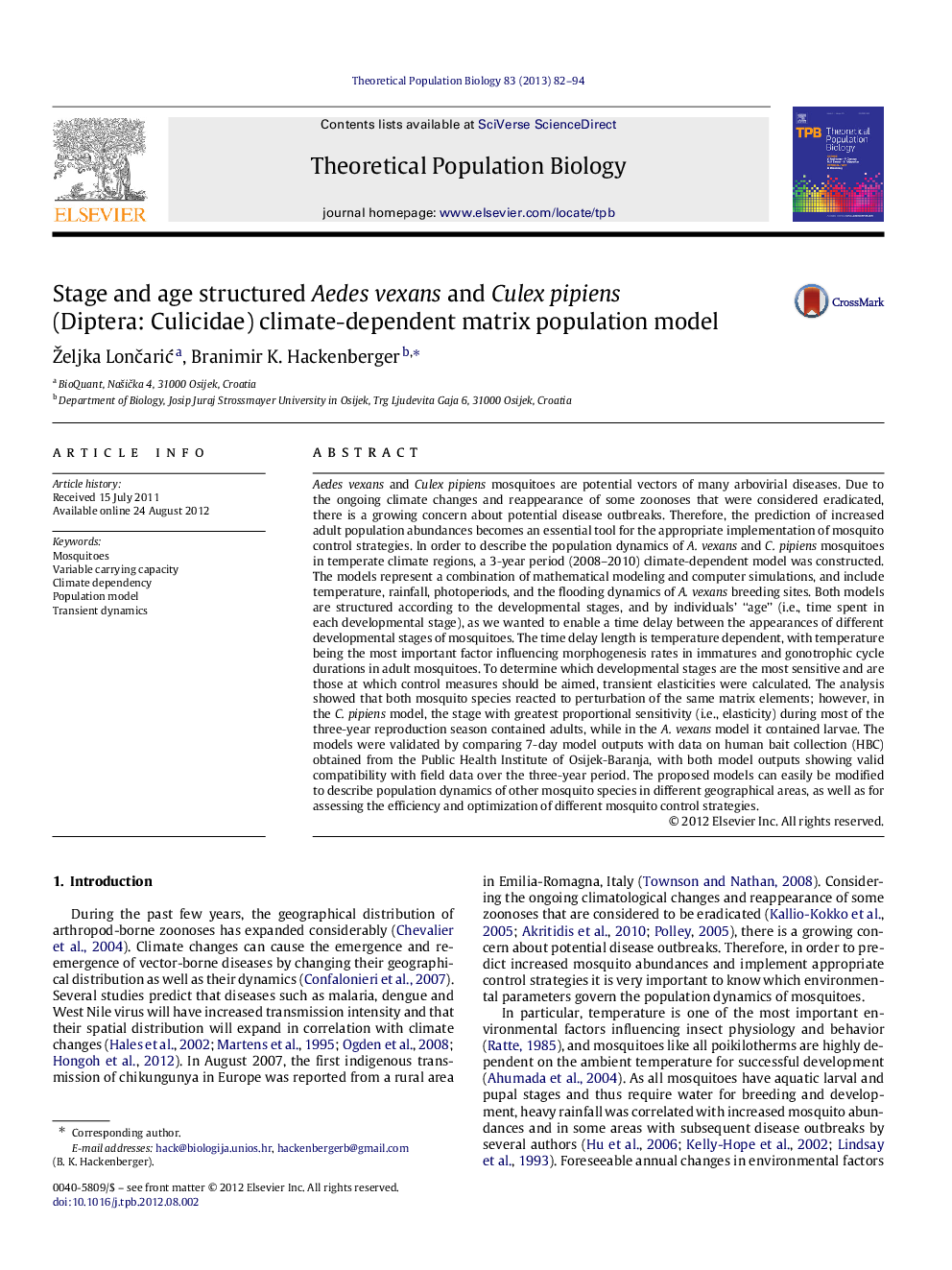| کد مقاله | کد نشریه | سال انتشار | مقاله انگلیسی | نسخه تمام متن |
|---|---|---|---|---|
| 4502483 | 1624169 | 2013 | 13 صفحه PDF | دانلود رایگان |

Aedes vexans and Culex pipiens mosquitoes are potential vectors of many arbovirial diseases. Due to the ongoing climate changes and reappearance of some zoonoses that were considered eradicated, there is a growing concern about potential disease outbreaks. Therefore, the prediction of increased adult population abundances becomes an essential tool for the appropriate implementation of mosquito control strategies. In order to describe the population dynamics of A. vexans and C. pipiens mosquitoes in temperate climate regions, a 3-year period (2008–2010) climate-dependent model was constructed. The models represent a combination of mathematical modeling and computer simulations, and include temperature, rainfall, photoperiods, and the flooding dynamics of A. vexans breeding sites. Both models are structured according to the developmental stages, and by individuals’ “age” (i.e., time spent in each developmental stage), as we wanted to enable a time delay between the appearances of different developmental stages of mosquitoes. The time delay length is temperature dependent, with temperature being the most important factor influencing morphogenesis rates in immatures and gonotrophic cycle durations in adult mosquitoes. To determine which developmental stages are the most sensitive and are those at which control measures should be aimed, transient elasticities were calculated. The analysis showed that both mosquito species reacted to perturbation of the same matrix elements; however, in the C. pipiens model, the stage with greatest proportional sensitivity (i.e., elasticity) during most of the three-year reproduction season contained adults, while in the A. vexans model it contained larvae. The models were validated by comparing 7-day model outputs with data on human bait collection (HBC) obtained from the Public Health Institute of Osijek-Baranja, with both model outputs showing valid compatibility with field data over the three-year period. The proposed models can easily be modified to describe population dynamics of other mosquito species in different geographical areas, as well as for assessing the efficiency and optimization of different mosquito control strategies.
Journal: Theoretical Population Biology - Volume 83, February 2013, Pages 82–94